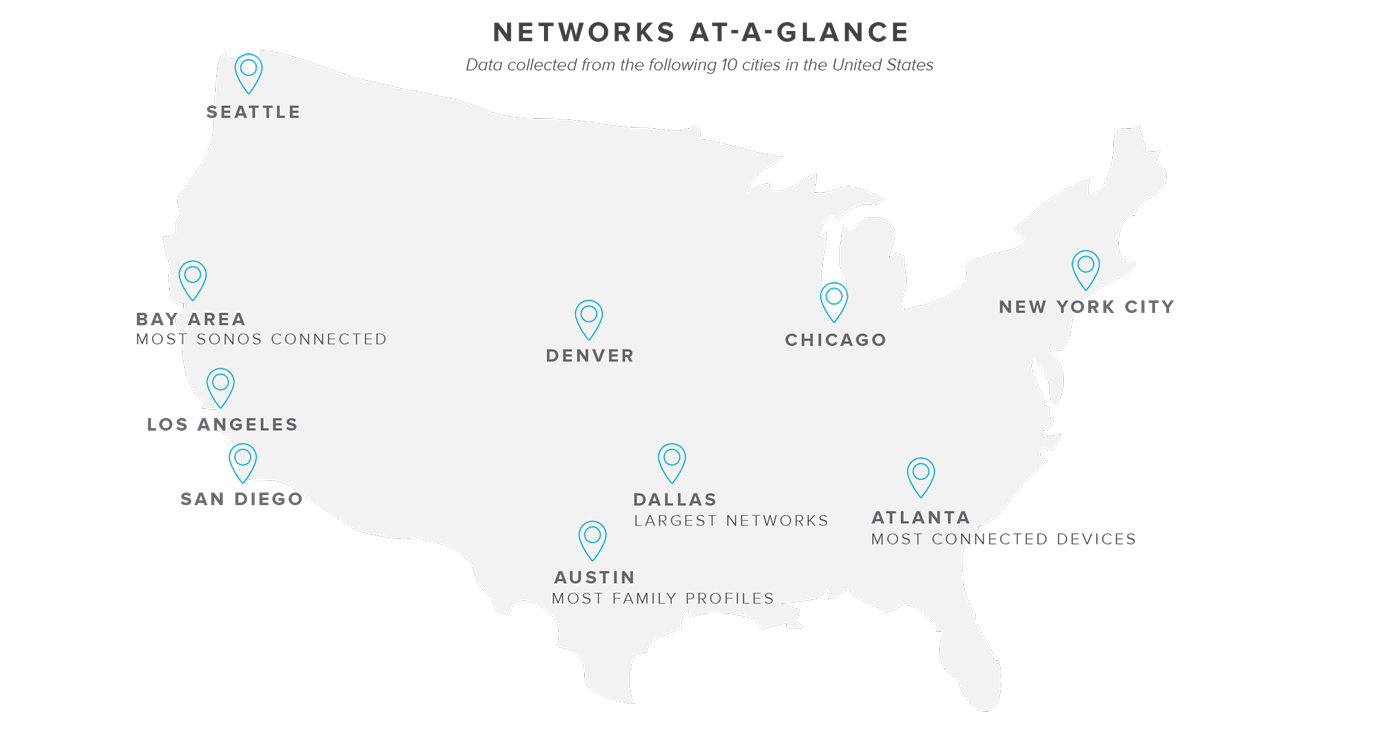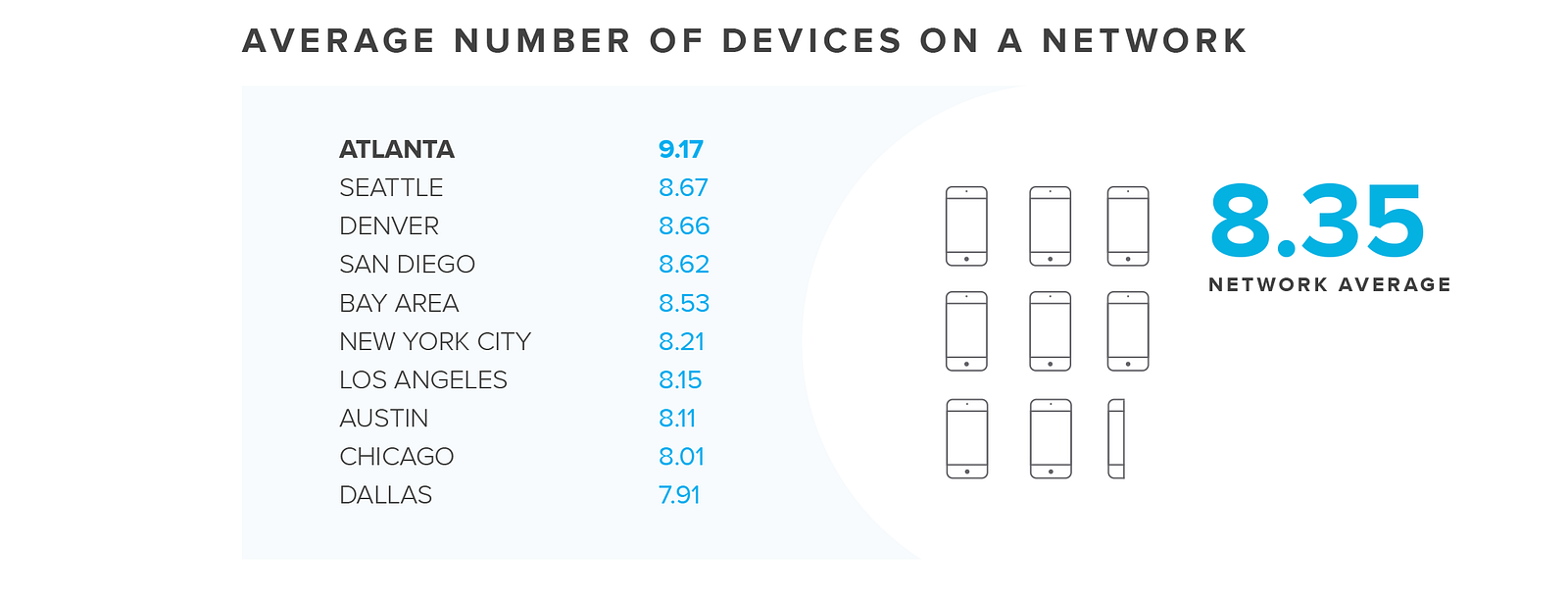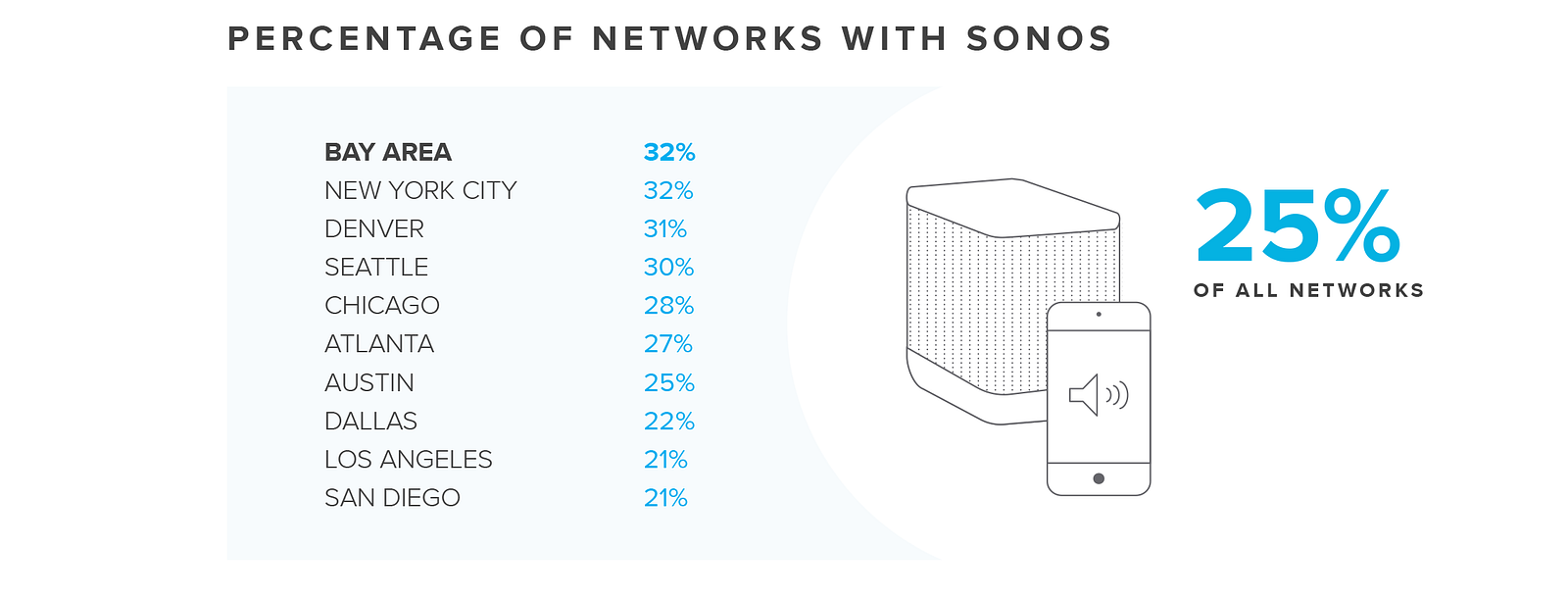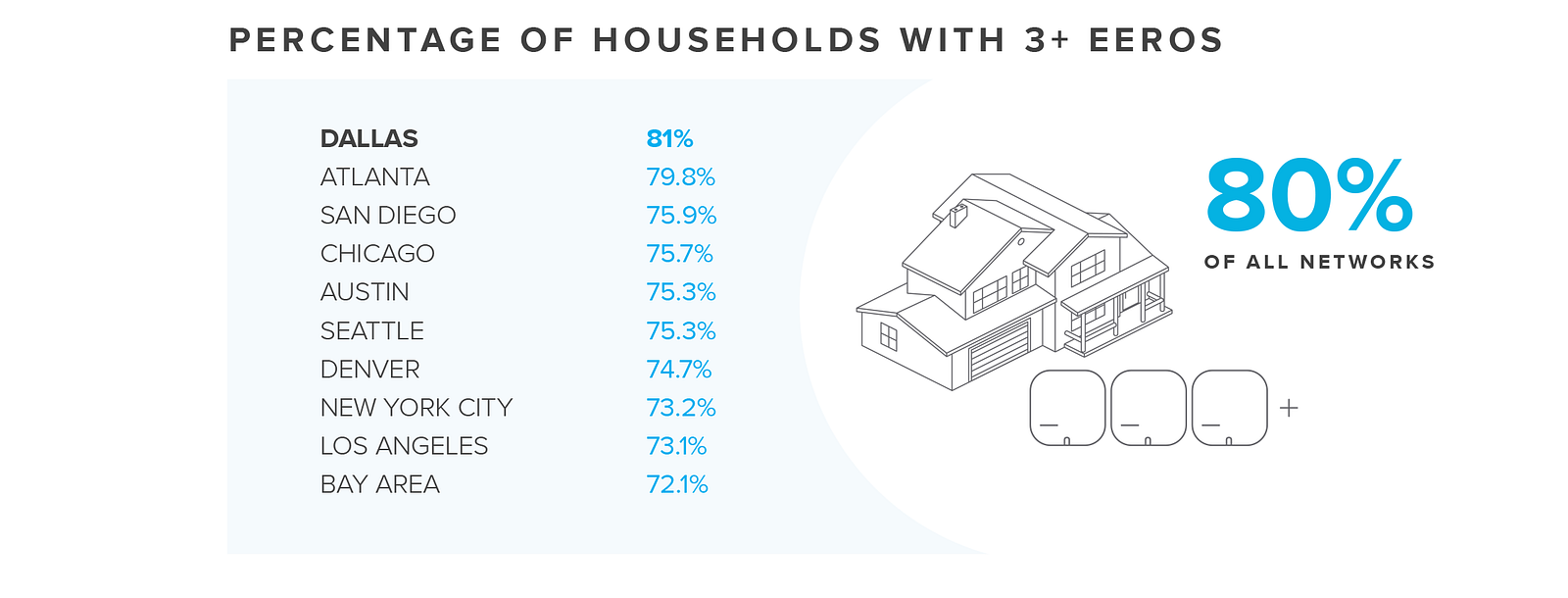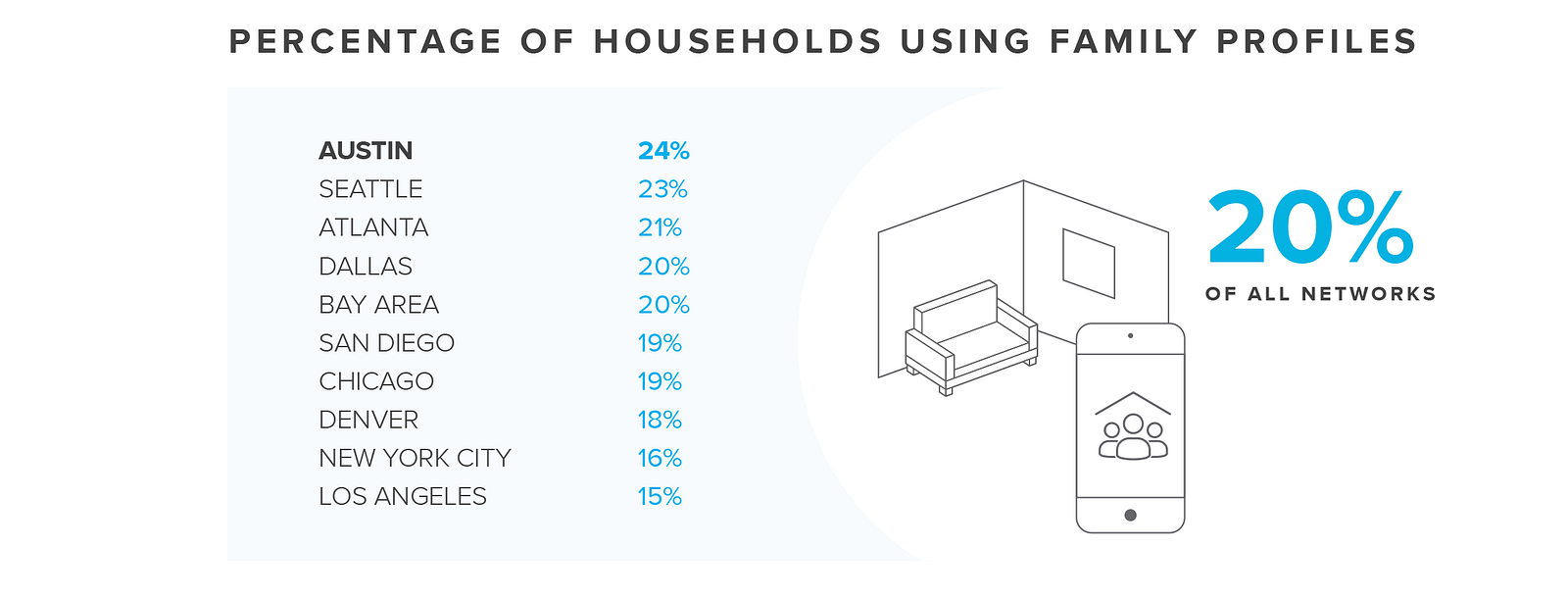Data Report | March 2017
Since launching in February 2016, we’ve consistently updated eero by adding new features and improving the overall customer experience. With hundreds of thousands of active eeros in homes around the world, we’re able to use learnings from millions of data points to help understand how customers use their networks.
Technology analyst firm Gartner recently projected that 8.4 billion connected products will be in use worldwide in 2017, up 31 percent year over year. This report examines how the explosion of connected home devices impacts home connectivity across the United States.
The below represents aggregated and anonymized data from active eero networks in 10 major cities. Specifically, the number of connected devices on a network, the types of devices in use, the size of a customer’s network, and usage of eero’s Family Profiles feature.
We’re feeling a connection
While the notion of a smarter home debuted in the ’60s, we’re just now seeing the realization of a more connected, tech-savvy home. Our WiFi-connected laptops and smartphones are increasingly accompanied by an armada of internet-connected TVs, entertainment consoles, thermostats, and security systems. In fact, the average number of internet-connected devices in an eero household is 8.35.
Connected device patterns show that Atlanta homes are nearly 16 percent more device-heavy than Dallas homes. Atlanta also beats out traditional tech hubs Seattle and the Bay Area in the number of connected devices per network, averaging more than nine devices per household.
Sonos speakers are among the most popular devices connected to eero networks. The Bay Area, New York City, and Denver top the list of the most musically-inclined cities.
Everything is bigger in Dallas
Dallas tops the list of cities with the largest WiFi networks, with 81 percent of homes having three or more eeros. In last place is the Bay Area, known for its old buildings and single-floor flats, with 72 percent.
It’s all in the family
As the world shifts from analog to digital, kids spend more and more time on devices like laptops, tablets, and video game consoles. Naturally, parents want to monitor and manage screen time so they can have more family time. We launched Family Profiles, which allows parents to create profiles for their children’s devices and pause the internet for important family moments (like bedtime or dinnertime).
The data tells us that parents in Austin, Seattle, and Atlanta are ahead of the game when it comes to monitoring screen time, while parents in Los Angeles and New York City are about 38 percent less inclined to regulate their children’s internet usage.
eero takes the stewardship of personal data very seriously. Our goal is to create high quality hardware and software. We aren’t in the business of selling ads or customer data, and we don’t monitor internet traffic. The limited diagnostic data we do collect is used for improving the performance of eero networks, enabling user features, and developing new eero products.
For more information on our data report, email press@eero.com.
